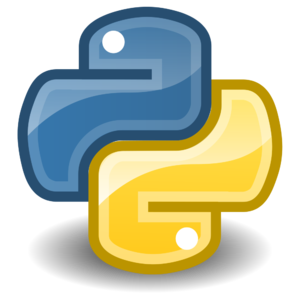We are still actively working on the spam issue.
Difference between revisions of "Python"
m (Willy on Wheels moved page Python to Python on wheels) |
m (Kibukj moved page Python on wheels to Python over redirect: "on wheels" fix) |
(No difference)
| |
Revision as of 19:01, 12 August 2014
Python is a wicked cool [sic] interpreted scripting language that a lot of people start their programming journeys with. It has an easy to read, dynamically typed syntax that appeals to beginners and people who suffer from great sloth.
Basic Examples
The basics of Python are to start a file with the path of the interpreter. If you have written code in BASH, Perl or Ruby you will recognize the opening line.
#!/usr/bin/env python
To run your python application, you have two methods. If you are using a UNIX based operating system you can use the `chmod` command to make the file executable, or pass it as an argument to the python interpreter.
$ chmod +x my_file.py && ./my_file.py
Alternatively:
$ python my_file.py
Printing
Printing to the screen is always the most basic introduction to a programming language.
#!/usr/bin/env python
print("Hello World!")
Variables
Variables are a way of representing data with human-readable names.
#!/usr/bin/env python my_variable = "Hello " print(my_variable + "World!")
As you can see, we used the variable in the print() function and concatenated it with the rest of the string "World!".
Arithmetic
Python, like all languages, can do math as well.
#!/usr/bin/env python num = 5 print(num + 6)
The above program will display the sum of 5 and 6 (11, you pleb). You can use any of the following operators:
- + (addition)
- - (subtraction)
- / (division)
- * (multiplication)
- % (modulus)
- ** (exponentiation)
In addition, Python supports augmented assignment:
num = num + 5 num += 5 # equal to the above statement num = num / 5 num /= 5 # equal to the above statement
Augmented assignment operators are available for each standard mathematical operator:
- += (addition)
- -= (subtraction)
- /= (division)
- *= (multiplication)
...and so on. As a rule of thumb, an augmented assignment operator can be constructed by taking its equivalent mathematical operator and appending an equals sign: + becomes +=, - becomes -=, etc.
Python 2 and 3
The two currently used versions of Python are Python 2.x and Python 3.x. While Python 3 was released more recently (in late 2008), many libraries, frameworks, and other dependencies use the older version. As a result, many programmers have not made the switch and dependencies continue being written for Python 2.x. While it is recommended that programmers use Python 3.x now, use of Python 2.x is still acceptable due to third-party support.
